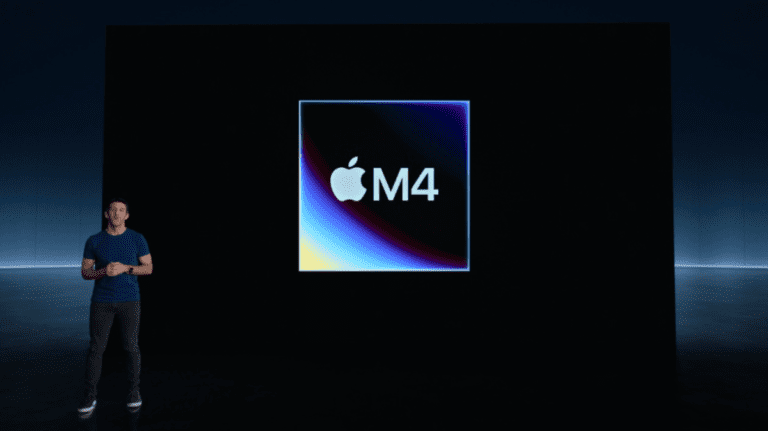At its iPad event today, Apple announced its new iPad Pro tablets, powered by its new M4 chipsthe fourth generation of its custom SoCs.
The new chips feature a new display engine, as well as significantly updated CPU and GPU cores. The base M4 chips have up to 10 CPU cores and 10 GPU cores, with the CPU cores split between four performance cores and six efficiency cores.
Apple claims the new CPU is 50% faster than the M2 chips that powered the last generation iPad Pro, while the GPU will offer a 4x increase in performance while still delivering the same performance per watt as the M3. Apple emphasized that the new GPU architecture features dynamic caching, hardware-accelerated mesh shading, and ray tracing, a first for the iPad.


This year is 2024, so Apple is also playing up the neural engine in its chips even more, and points out that it has long added these to its SoCs, while the PC market is just now catching up. That’s fair, but there weren’t that many use cases for these chips before. The new neural engine in the M4 delivers performance of up to 38 trillion operations per second. That, Apple notes, is 60 times faster than the first neural engine performed when it debuted in the A11 Bionic chip.
The new CPU cores also feature improved ML accelerators, Apple noted.


“The new iPad Pro with M4 is a great example of how building best-in-class custom silicon enables breakthrough products,” said Johny Srouji, Apple’s senior vice president of Hardware Technologies, using typical Apple hyperbole. “The efficient performance of the M4, together with its new display engine, enables the iPad Pro’s slim design and game-changing display, while fundamental improvements to the CPU, GPU, Neural Engine and memory system make the M4 extremely suitable for the latest applications that leverage artificial intelligence. Overall, this new chip makes iPad Pro the most powerful device of its kind.”
Apple first announced the 3nm M3 series last October when it announced the M3, M3 Pro and M3 Max. The standard M3 featured a 10-core GPU and an 8-core CPU, while the M3 Pro comes with a 12-core CPU and an 18-core GPU. The high-end M3 Max (no Ultra model yet) has a 16-core CPU and 40-core GPU.
Typically, Apple brought its newest chips to its Pro series laptops first, then used the latest generation for its tablets (and it’s doing the same with the new iPad Air this year). But it’s taking a slightly different approach here by debuting the M4 on the iPad Pro. If I had to guess, part of that is because Qualcomm’s latest Arm-based Snapdragon chips are on their way to PCs — and while we haven’t seen the full benchmarks for them yet, it looks like they could put some pressure on Apple’s Silicon lead, especially as Microsoft continues to invest in Windows on Arm.
